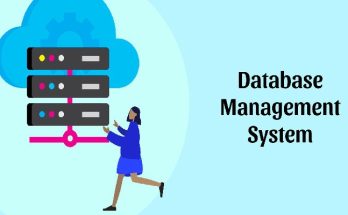Unveiling the Engine: Exploring Essential Business Intelligence Components for Data-driven Success
In today’s fast-paced business landscape, the ability to make informed decisions based on data-driven insights is crucial for staying ahead of the competition. Welcome to a deep dive into the world of Business Intelligence Components – where we unravel the engine that drives success through strategic analytics and innovative visualization techniques. Join us as we explore how harnessing these key components can unlock a treasure trove of opportunities for your organization!

The Importance of Data-driven Decision Making in today’s Business Landscape
In today’s fast-paced business landscape, data has become the cornerstone of informed decision-making. Gone are the days of relying solely on intuition or guesswork to drive strategy. Companies that embrace data-driven approaches gain a competitive edge by leveraging insights for smarter choices.
By harnessing the power of data, businesses can uncover trends, patterns, and customer preferences that may have otherwise gone unnoticed. This leads to more targeted marketing campaigns, optimized operations, and improved overall performance.
Data-driven decision-making not only enhances efficiency but also fosters innovation. By analyzing information effectively, organizations can identify new opportunities for growth and stay ahead in dynamic markets.
In essence, embracing data as a key driver of decisions is no longer optional but imperative for success in today’s ever-evolving business environment.
Key Components of a Successful Business Intelligence Strategy
When it comes to crafting a successful business intelligence strategy, there are several key components that play a crucial role in driving data-driven decision-making within an organization.
First and foremost, effective data management and governance are essential. This involves ensuring the quality, security, and integrity of the data being collected and utilized for analysis. Without proper data governance practices in place, the insights derived from business intelligence efforts may be compromised.
Having robust analytics and reporting tools is vital for interpreting vast amounts of data efficiently. These tools enable businesses to uncover trends, patterns, and insights that can guide strategic decision-making processes.
Employing advanced data visualization techniques is paramount for presenting complex information in a clear and digestible manner. Visualizations such as dashboards, charts, and graphs help stakeholders understand key metrics at-a-glance.
Incorporating these components into your business intelligence strategy sets the foundation for leveraging valuable insights to drive growth and stay competitive in today’s dynamic market landscape.
A. Data Management and Governance
Data management and governance are the backbone of any successful business intelligence strategy. It involves organizing, storing, and ensuring the quality of data to make informed decisions. Without proper data management, businesses risk making inaccurate judgments based on flawed information.
Effective data governance establishes guidelines for how data should be handled within an organization. This ensures consistency, security, and compliance with regulations. By implementing robust data management practices, companies can streamline operations and gain a competitive edge in today’s fast-paced business environment.
Data governance also plays a vital role in maintaining data integrity and protecting sensitive information from breaches or misuse. When information is managed effectively, it becomes a valuable asset that drives strategic decision-making processes.
B. Analytics and Reporting Tools
In the realm of business intelligence components, analytics and reporting tools play a pivotal role in transforming raw data into actionable insights. These tools sift through vast amounts of data to uncover patterns, trends, and anomalies that can guide strategic decision-making.
By utilizing advanced algorithms and machine learning capabilities, businesses can extract valuable information from their data sets with precision and efficiency. From predictive analytics to real-time reporting dashboards, these tools empower organizations to make informed choices based on concrete evidence rather than intuition or guesswork.
Moreover, the ability to customize reports and visualizations according to specific business needs enhances communication across teams and facilitates collaboration towards common goals. With intuitive interfaces and interactive features, users can explore data dynamically and derive meaningful conclusions at a glance.
In today’s dynamic business landscape where agility is key to success, leveraging robust analytics and reporting tools is essential for staying ahead of the competition.
C. Data Visualization Techniques
Data visualization techniques play a crucial role in transforming complex data into easily digestible insights. By utilizing various visual elements such as charts, graphs, and dashboards, businesses can uncover hidden patterns and trends within their data. These techniques not only enhance understanding but also facilitate quicker decision-making processes.
One popular method is the use of interactive dashboards that allow users to drill down into specific metrics for a more detailed analysis. Heat maps are another effective tool for highlighting areas of interest or concern within datasets through color-coded visuals. Additionally, geographic mapping can visually represent data based on location, offering valuable insights for businesses with multiple branches or locations.
By incorporating these visualization techniques into their business intelligence strategy, organizations can improve communication, streamline operations, and gain a competitive edge in today’s data-driven landscape.
Leveraging Business Intelligence for Competitive Advantage
In today’s fast-paced business environment, staying ahead of the competition is crucial for long-term success. Leveraging business intelligence tools can provide companies with a significant competitive advantage by enabling them to make data-driven decisions swiftly and accurately.
By analyzing vast amounts of data in real-time, organizations can uncover valuable insights that help them understand market trends, consumer behavior, and operational efficiency. This deep understanding allows businesses to identify opportunities for growth and innovation while mitigating risks effectively.
Moreover, utilizing advanced analytics and reporting tools empowers companies to track key performance indicators (KPIs) efficiently, measure their progress against set goals, and adapt their strategies accordingly. With actionable data at their fingertips, decision-makers can respond promptly to changing market conditions and make informed choices that drive sustainable growth.
Harnessing the power of business intelligence not only enhances operational efficiency but also fosters a culture of continuous improvement within an organization. By leveraging BI for competitive advantage intelligently, companies can position themselves as industry leaders poised for long-term success.
Case Studies: How Companies Have Benefitted from Business Intelligence Implementation
In the dynamic world of business, success often hinges on making informed decisions backed by data. Companies that have embraced Business Intelligence (BI) have witnessed remarkable transformations in their operations and bottom line results.
One such case study is Company X, a retail giant that utilized BI to analyze customer purchasing patterns and optimize inventory management. By leveraging data-driven insights, they reduced excess stock levels and increased sales through targeted marketing campaigns.
Another example is Company Y, a tech startup that employed BI tools to track user engagement metrics for their mobile app. This enabled them to enhance user experience, leading to higher retention rates and improved customer satisfaction.
Furthermore, Company Z, a manufacturing firm, implemented BI solutions to streamline production processes and identify cost-saving opportunities. This resulted in enhanced efficiency and significant savings in operational expenses.
These real-world examples showcase how businesses across various industries have reaped substantial benefits from implementing robust BI strategies.
Challenges and Solutions in Implementing an Effective BI Strategy
Implementing an effective Business Intelligence (BI) strategy comes with its own set of challenges. One common hurdle is the complexity of integrating data from various sources into a centralized system. This can lead to issues with data accuracy and consistency, impacting the overall effectiveness of BI initiatives.
Another challenge is ensuring that the right tools and technologies are in place to support data analysis and reporting. Without proper infrastructure, organizations may struggle to derive meaningful insights from their data, hindering decision-making processes.
Additionally, resistance to change within an organization can pose a significant obstacle when implementing a new BI strategy. It’s essential to address any cultural barriers and provide adequate training to ensure buy-in from all stakeholders.
To overcome these challenges, businesses need to invest in robust data governance frameworks, implement user-friendly analytics tools, and prioritize ongoing education and communication around the benefits of BI. By addressing these obstacles head-on, companies can unlock the full potential of their data assets for informed decision-making.
Conclusion: Harnessing the Power
In a rapidly evolving business landscape, harnessing the power of Business Intelligence components is no longer just an option – it’s a necessity. By integrating robust data management and governance practices, leveraging advanced analytics tools, and employing effective data visualization techniques, organizations can unlock valuable insights to drive informed decision-making.
Business Intelligence empowers companies to stay ahead of the competition by enabling them to make strategic decisions based on concrete data rather than guesswork. With real-time access to key metrics and performance indicators, businesses can identify trends, spot opportunities for growth, and mitigate risks effectively.
As showcased in the case studies highlighted earlier in this article, companies across various industries have reaped substantial benefits from implementing Business Intelligence strategies. Whether it’s optimizing operational efficiency, enhancing customer experiences, or identifying new revenue streams – the possibilities are endless when armed with the right BI tools.
However, navigating the challenges associated with implementing a comprehensive BI strategy requires careful planning and execution. From addressing data quality issues to ensuring user adoption of analytics platforms, organizations must proactively tackle obstacles that may hinder their journey towards data-driven success.
Embracing Business Intelligence components is not merely about collecting vast amounts of data; it’s about transforming that raw information into actionable insights that drive positive outcomes for your business. By investing in a robust BI infrastructure and fostering a culture that values evidence-based decision-making, companies can position themselves for sustained growth and competitive advantage in today’s dynamic marketplace. So go ahead – unleash the full potential of your organization through the power of Business Intelligence!



